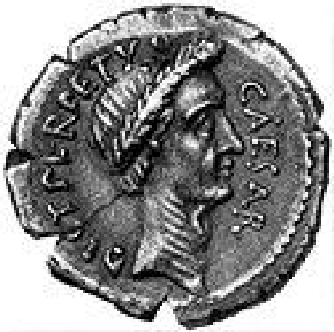Credit & Copyright: Rune Rysstad
Explanation:
Today,
February 29th, is a
leap day - a relatively rare occurrence.
Advised by
Alexandrian astronomer Sosigenes,
Roman dictator
Julius Caesar, pictured above in a self-decreed minted coin,
created a
calender system
in 46 BC that contained one
leap day
every four years. The reason for adding
leap
days was that a year -
defined by the time it takes the Earth to circle the Sun - does not actually
take an exact integer number of days - defined by the time it takes for the
Earth to rotate once. In fact, one year by these
astronomical definitions is about 365.24219 days.
If all calendar years contained 365 days, they
would drift from the actual year by about 1 day every 4 years.
Eventually July (named posthumously for Julius Caesar himself)
would occur during the northern hemisphere winter!
By making
most years 365 days but every fourth year 366 days,
the calendar year and the actual year remained more nearly in step.
This "Julian" calender system was used until the year
1582 when
Pope Gregory
XIII added that leap days should not occur in years
ending in "00" except if divisible by 400, providing a further
fine tuning.
This "Gregorian" calender system
is the one in most common use today.
1999 2000 2001 2002 2003 2004 2005 2006 2007 2008 2009 2010 2011 2012 2013 2014 2015 2016 2017 2018 2019 2020 2021 2022 2023 2024 2025 |
Январь Февраль Март Апрель Май Июнь Июль Август Сентябрь Октябрь Ноябрь Декабрь |
NASA Web Site Statements, Warnings, and Disclaimers
NASA Official: Jay Norris. Specific rights apply.
A service of: LHEA at NASA / GSFC
& Michigan Tech. U.
|
Публикации с ключевыми словами:
Julius Caesar - Leap Days - год, високосный - год, календарный - календарь - григорианский календарь - юлианский календарь
Публикации со словами: Julius Caesar - Leap Days - год, високосный - год, календарный - календарь - григорианский календарь - юлианский календарь | |
См. также:
Все публикации на ту же тему >> | |
